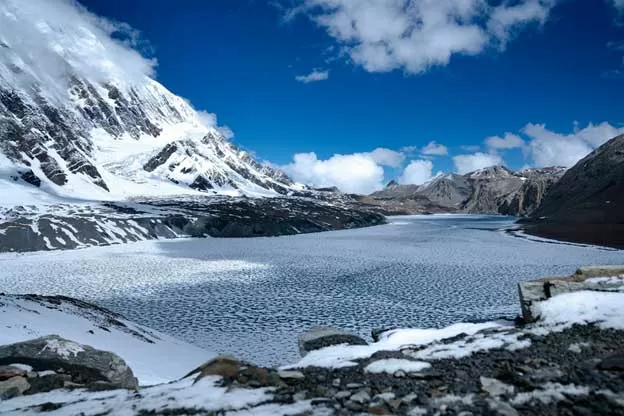The Third Pole (TP), also known as the High Asia or the Asian Water Tower, is a vast region encompassing the mountain systems of Asia. It is home to the largest ice mass outside of the polar regions, spanning the Tibetan plateau and surrounding ranges such as the Pamir-Hindu Kush, Hengduan, Tienshan, and Qilian. However, recent scientific assessments have revealed a concerning trend – the Third Pole is warming at an alarming rate, surpassing the global average.
According to these scientific assessments, the Third Pole is warming at a rate of over 0.3 ºC per decade. This is more than twice the global average of 0.13 ºC per decade. This rapid warming has serious implications for the region and the world as a whole.
The Third Pole is known as the “water tower of Asia” as it is the source of water for over 1.3 billion people in Asia. The melting glaciers in this region feed major rivers such as the Indus, Ganges, Yangtze, and Yellow River, providing water for agriculture, hydropower, and other essential activities. The rapid warming of the Third Pole is causing these glaciers to melt at an alarming rate, leading to reduced water flow in these rivers. This not only affects the availability of water but also increases the risk of natural disasters such as floods and landslides.
Furthermore, the Third Pole is home to a diverse range of flora and fauna, many of which are already endangered due to various factors such as habitat loss and climate change. The rapid warming of this region is only exacerbating the threat to these species, leading to potential extinctions. Moreover, the melting of glaciers is also causing lakes to form, leading to changes in the ecosystem and affecting the livelihoods of local communities.
The Third Pole is also known for its role in regulating the global climate. The vast ice mass reflects sunlight, helping to cool the Earth’s surface. However, with the rapid melting of glaciers, this reflective surface is decreasing, leading to increased absorption of heat and contributing to the overall warming of the planet.
The reasons for the rapid warming of the Third Pole are numerous, and many are linked to human activities. The burning of fossil fuels, deforestation, and other human-induced activities have led to an increase in greenhouse gases, trapping heat in the atmosphere and causing global temperatures to rise. This, in turn, is leading to the warming of the Third Pole.
The good news is that there is still time to address this issue and prevent further damage to the Third Pole. It is crucial for countries to take immediate action to reduce their carbon emissions and transition to cleaner and renewable sources of energy. This will not only help in mitigating the effects of climate change but also have a positive impact on the global environment.
Collaborative efforts are also needed to protect and preserve the Third Pole. Governments, organizations, and individuals must come together to implement sustainable practices and policies to reduce the impact of human activities on this fragile region. This could include measures such as promoting eco-tourism, implementing stricter regulations on industrial activities, and investing in renewable energy projects.
Moreover, it is essential to raise awareness about the issue and educate people about the importance of the Third Pole. This will help in garnering support and mobilizing action towards protecting this critical region.
Fortunately, there have been some positive developments in recent years. The Third Pole Environment (TPE) program, launched in 2009, has been working towards understanding and addressing the challenges faced by the region. It has brought together scientists from various countries and disciplines to conduct research and develop strategies for the conservation and sustainable development of the Third Pole.
In conclusion, the Third Pole, with its vast glaciers and diverse ecosystems, is a crucial region that needs urgent attention. The rapid warming of this region has serious implications for the environment, economy, and livelihoods of millions of people. It is time for us to take action and work towards protecting and preserving this vital resource for the present and future generations. Let us join hands and make a positive impact on the Third Pole, for the sake of our planet and all its inhabitants.



